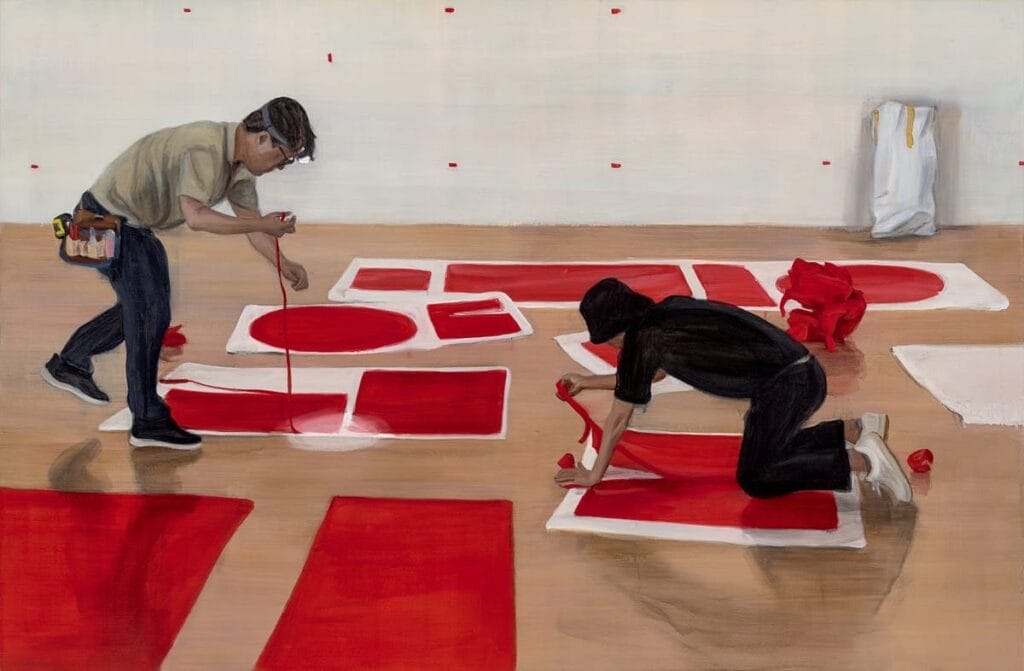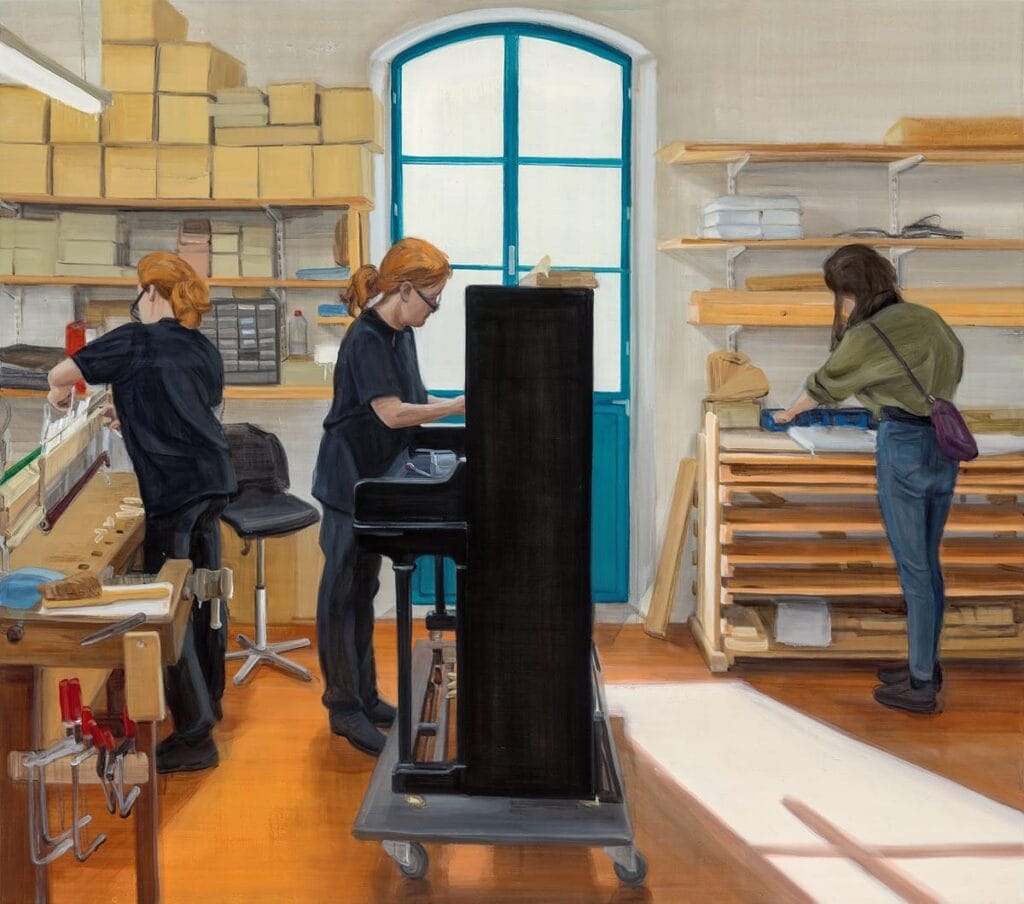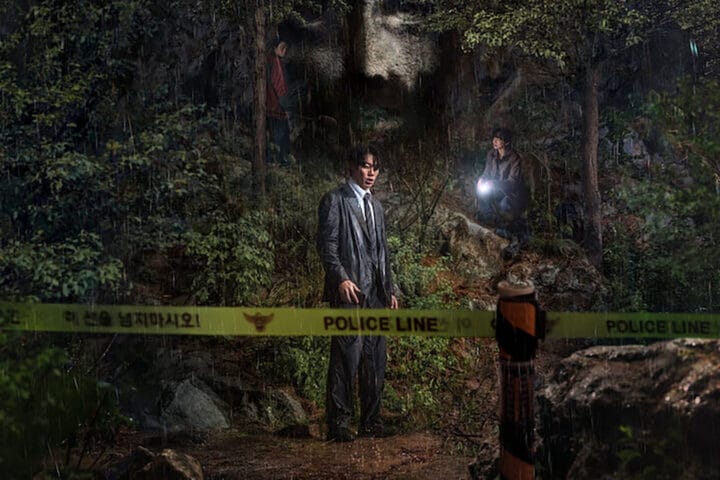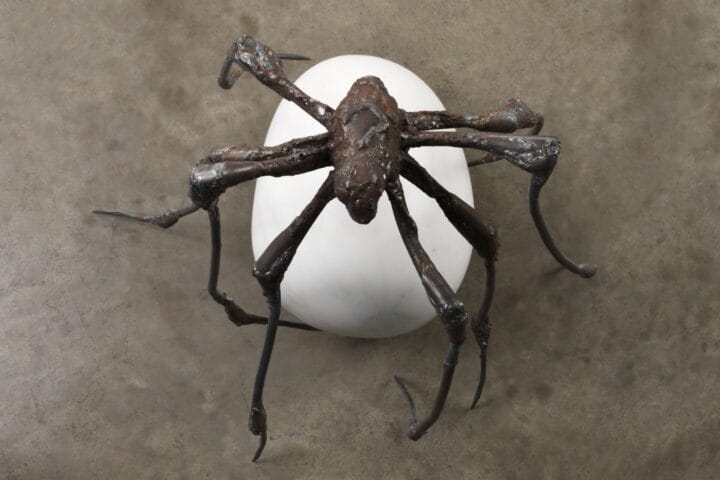Kukje Gallery is thrilled to announce Rocks, Smoke, and Pianos, a solo exhibition by the talented Jina Park, hosted in the gallery’s Seoul K2 and Hanok spaces. This exhibition marks Park’s first presentation in the gallery’s Seoul location since her solo show in Busan in 2021. The exhibition features around 40 new works, employing both oil and watercolor mediums, that explore various site-specific environments such as a museum exhibition hall, a restaurant kitchen, and a piano factory. Park continues her practice of using photography as the foundation for her paintings, reconstructing scenes she captures with her camera. Since her Lomography series (2004–07), where she used a Lomo camera, Park has been committed to creating paintings not constrained by subject matter, action, or event, but instead focusing on transforming everyday moments into painterly subjects occurring in an unseen dimension of space.
In contrast to her previous exhibition Human Lights (2021) in the gallery’s Busan location, which featured nocturnal outdoor scenes, all paintings in this exhibition portray interior spaces, each showing figures deeply engaged in their work with a sense of dedication. The exhibition title, Rocks, Smoke, and Pianos, refers to ordinary objects that people might overlook, and serves as a metaphor for the various locations the artist visited and documented with her camera.

Red Letters 03
2023
Oil on linen
110 x 168 cm
Courtesy of the artist and Kukje Gallery
Photo: Chunho An
Image provided by Kukje Gallery
Among these works, a group collectively known as “rocks” includes scenes captured during a group exhibition at the Busan Museum of Art, where Park was an invited participant. This series features scenes of art handlers unpacking rocks—elements from artist Park Hyunki’s work—as well as staff preparing adhesive vinyl for the exhibition, photographed during Park’s research visit to the museum while the previous exhibition was being installed. The series organized around the theme of “smoke” depicts bustling scenes within the restaurant kitchen at Kukje Gallery. Lastly, the series centered around “pianos” is Park’s most recent work, exploring the intricate details of Steingraeber piano manufacturing in Bayreuth, Germany, a town located in northern Bavaria, which Park visited earlier this year.
The chosen sites share the characteristic of being everyday work environments where employees perform their duties behind “Staff Only” signs. Considering her framing approach, one might assume that the activity of these individuals is the central focus in each scene. However, in the moments captured by Park’s camera, where chance plays a significant role, there are no dramatic actions, narratives, or predefined meanings. For instance, in the Kitchen series (2022–24), a large portion of the canvas is occupied by a crowded countertop filled with various cooking utensils and smoke rising into the air, as much as the figures engrossed in their tasks. Similarly, the lines and color planes that compose the scene become events in themselves, as seen in the rectangular vinyl sheets dispersed rhythmically on the exhibition floor in the Red Letters series (2023–24); the orange floor occupying two-thirds of the painting in the Rocks series (2023–24); or the bold lines and curves traversing the canvas in the Piano Factory series (2024). Figures in ambiguous poses, with no intention of conveying meaning, merely hint at their context, prompting speculation about the “before” and “after” of the scene—adding a sense of tension to the painting. This tension arises because, while the painting originates from everyday subjects captured through Park’s camera, it removes the social context or direct meaning they may hold, emphasizing the formal and compositional relationships of the lines, planes, and colors. In other words, the tension is heightened as Park moves forward in her experimentation toward art for art’s sake.

Piano Factory 06
2024
Oil on linen
150 x 170 cm
Courtesy of the artist and Kukje Gallery
Photo: Chunho An
Image provided by Kukje Gallery
As early as 2005, Park expressed her desire to create “horizontal paintings, or paintings without hierarchy.”¹ This statement reveals how questions about the “pictoriality of painting” have been central to her work all along. Park has consistently experimented with her art, seeking greater honesty in the physical qualities of her painterly materials and aiming for greater autonomy. Regarding her techniques, Park employs quick strokes reminiscent of drawings to create loosely structured images, to the extent that the figures almost blend into the background. However, unlike drawings, the figures are realized as dense layers of paint, composed of layered brushstrokes. Additionally, the physical qualities of the painting materials are no longer solely subjected to representation or signification, as the artist makes evident by leaving the oil paint flowing down the canvas or the smeared marks of watercolor on paper. She makes the materiality of the artistic medium visible and deliberately employs implicit and elliptical expressions to provide space for the viewer’s imaginative engagement.
Simultaneously, the camera has become a valuable tool in Park’s experimentation, aiming to challenge the established hierarchy among traditional elements of painting and achieve the desired autonomy. Park recomposes various scenes captured with her camera, thus preventing a specific time frame from appearing in the still image on the canvas. Moreover, her work clearly reflects the camera’s unique imaging qualities, such as the distortion of straight lines caused by the use of a wide-angle lens, the flattening of spatial dimensionality in the background, and an abstracted planar color block resulting from the camera flash, or the dramatic proportions within the pictorial frame due to the camera’s angle. Consequently, in works like Light for Interview (2023), A Pink Room (2024), and Hoverboards in Blue (2024), the wall and floor connect in a continuous plane, expressed through yellow, pink, and blue color fields. This use of color emerges as a significant characteristic in Park’s work. With these devices, the artist embraces contingency, a-temporality, and a-placelessness—qualities of abstract paintings—and constructs a unique visual language where abstract and representational spaces coexist.
This exhibition is a journey where Park navigates traditional boundaries between drawing and painting, figuration and abstraction, as well as photography and painting. By introducing discordant gaps into what appears to be a smooth surface of the painting, she explores her own approach to the question, “What is the pictoriality of painting?” The naturalistic style undergoes a series of transitions, summarized as distortions from the camera lens and the artist’s painterly experimentation, returning with a completely new pictorial language and grammar. This enables the artist to create works that thoroughly investigate and deliberately express the essence of painting. These fleeting moments, suspended in the present continuous tense, come together in the exhibition space, inviting reflection on the true essence of painting.
Exhibition Dates: December 3, 2024–January 26, 2025.
Venues: Kukje Gallery K2, Hanok.

Lighting in the Pink Room
2023
Oil on linen
220 x 190 cm
Courtesy of the artist and Kukje Gallery
Photo: Chunho An
Image provided by Kukje Gallery











